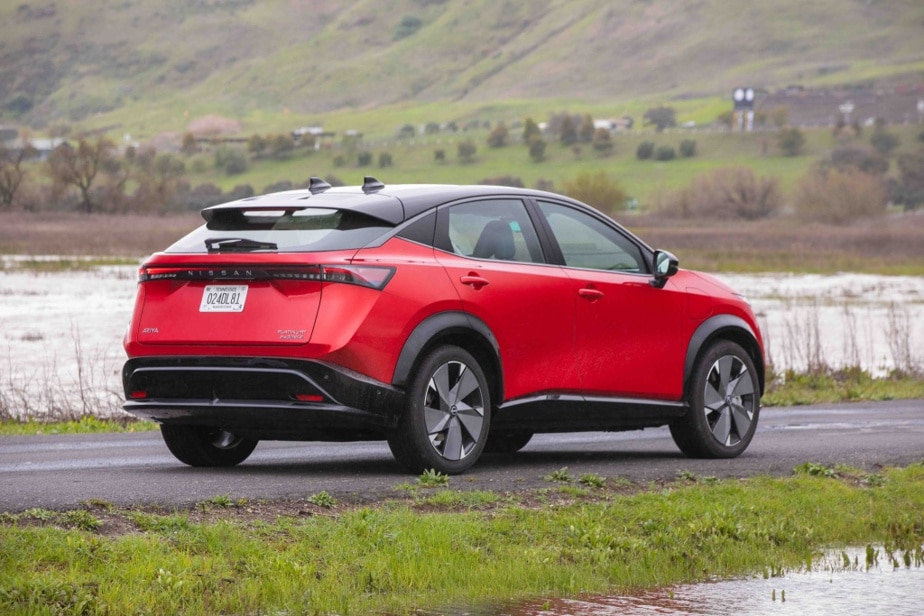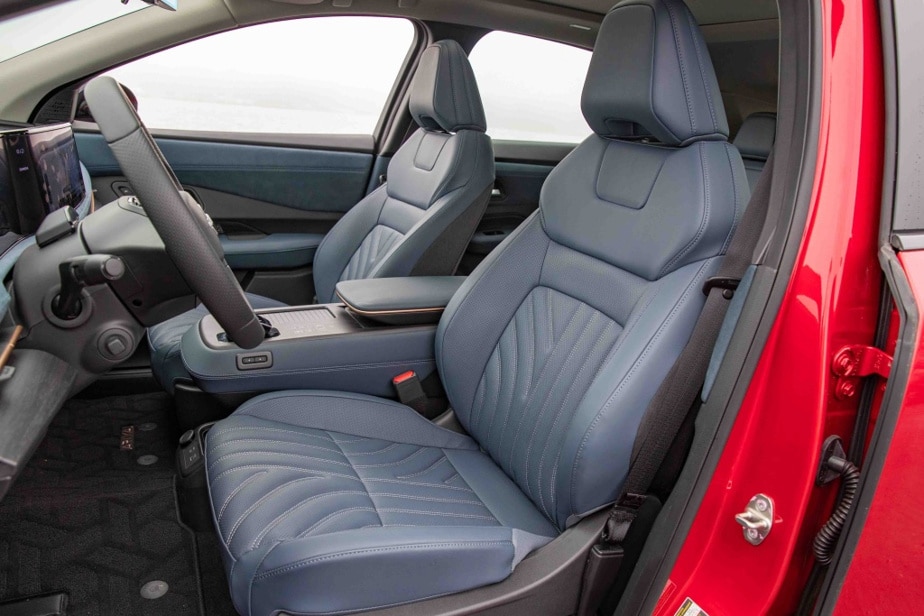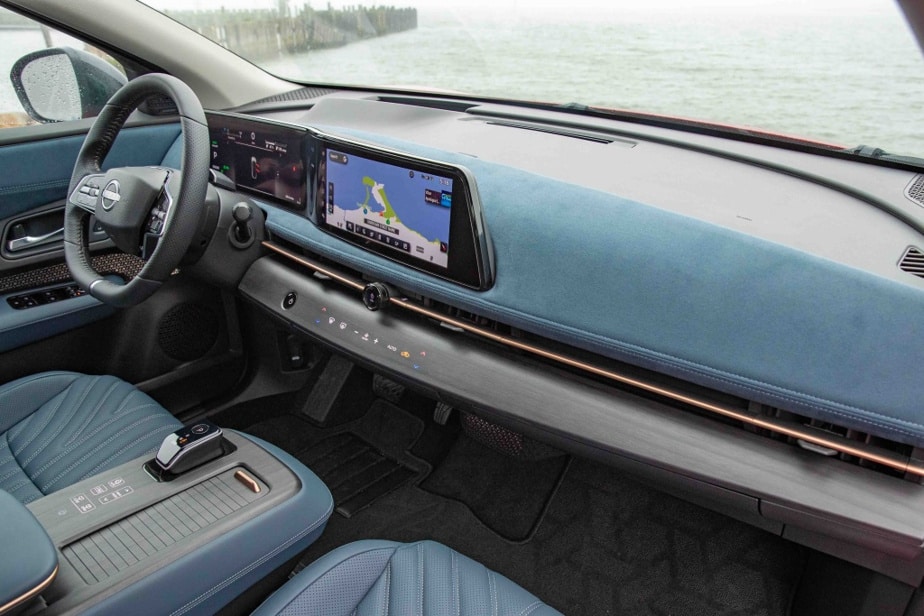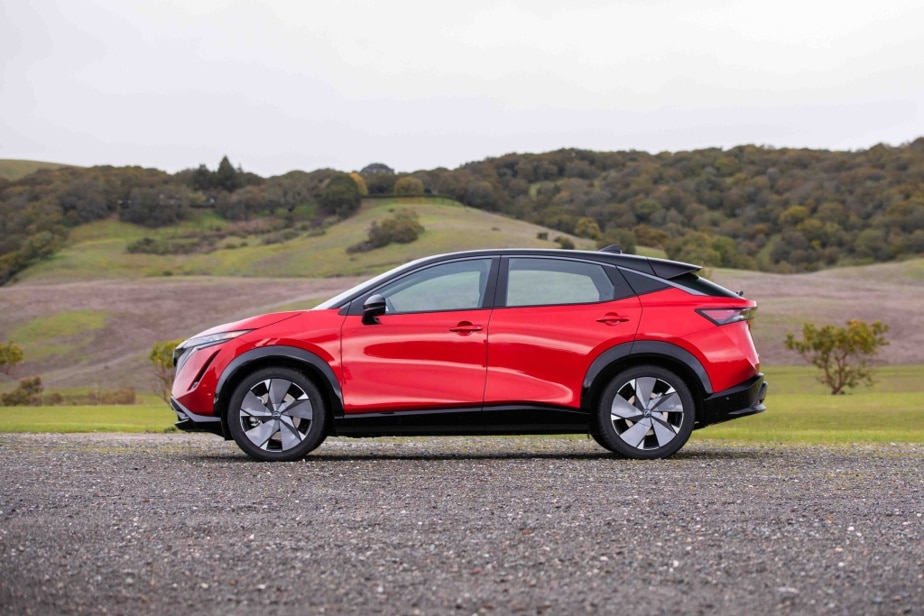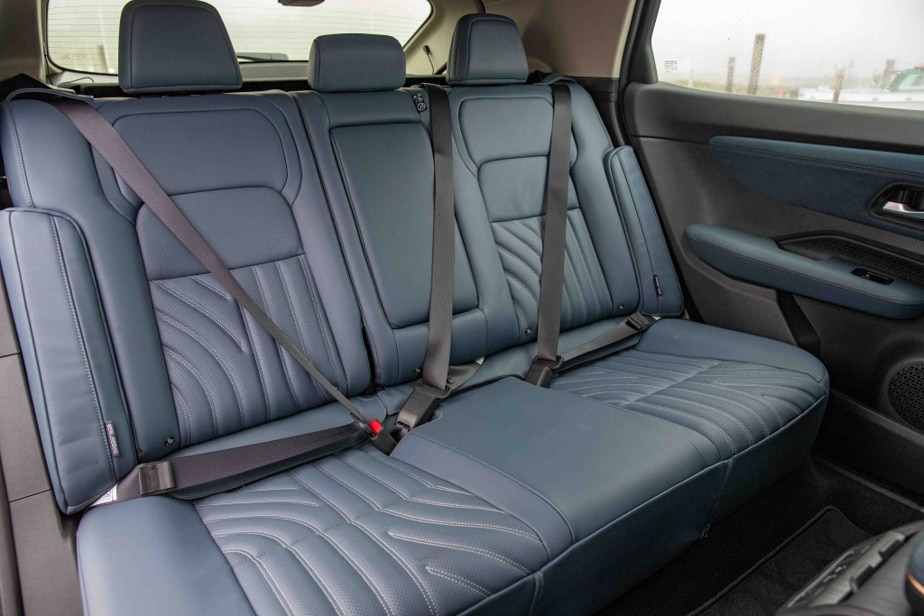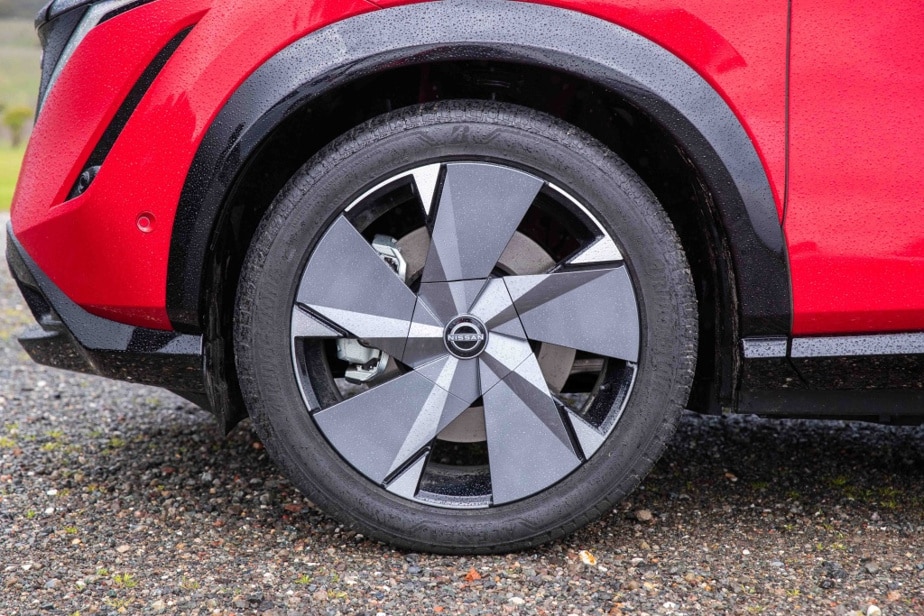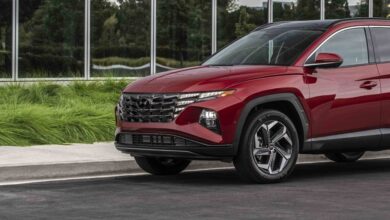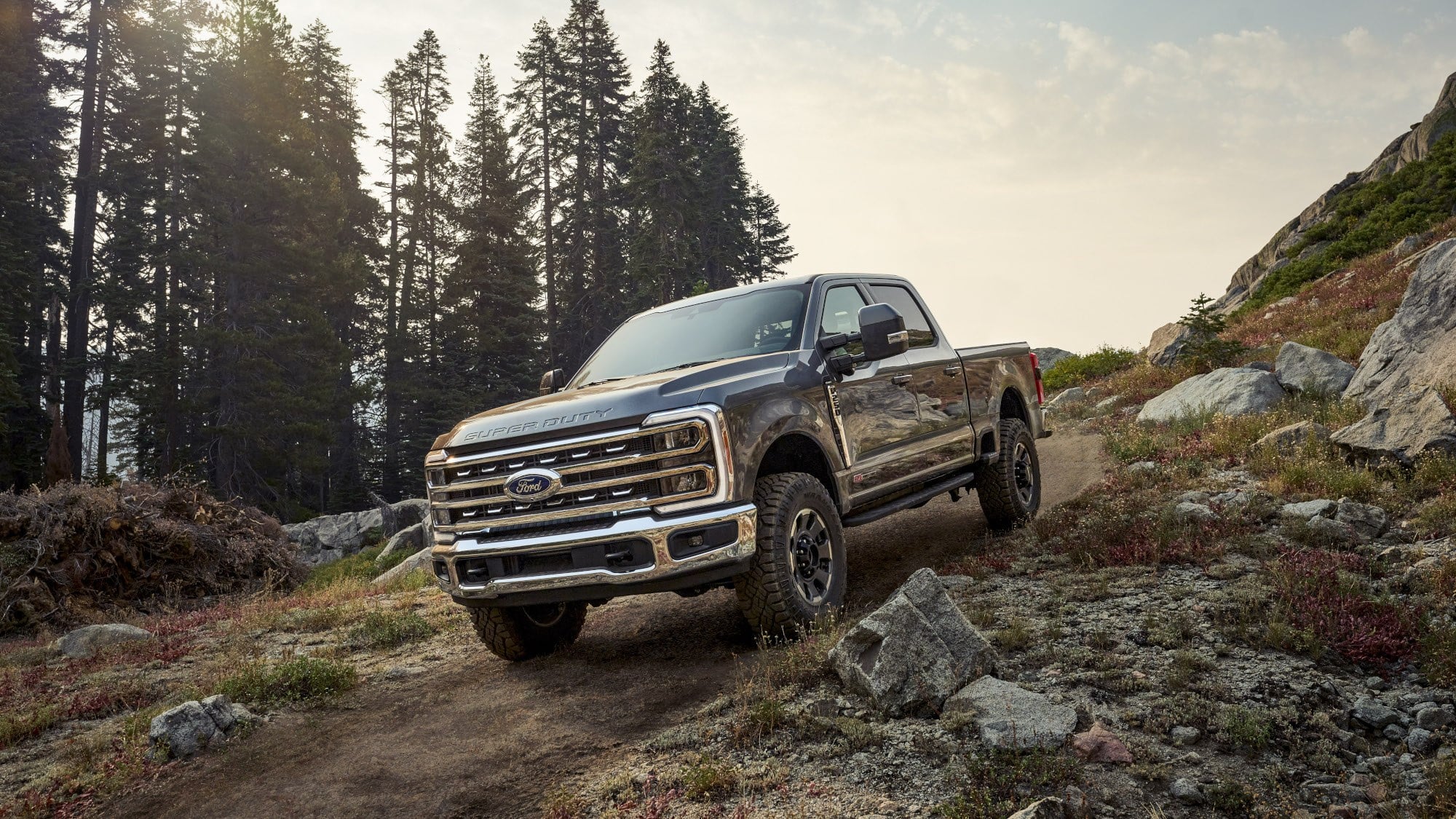
(Sonoma, California) Compared to Nissan’s initial forecasts, the launch of the Ariya finally comes two years late. Was the wait worth it?
Contents
A backlog
The delay taken by the Ariya does not excuse, but it is not dramatic either. Its main competitors remain for the most part distributed in dribs and drabs. A unique opportunity to make up for lost time, provided Nissan knows how to run a little.
-
PHOTO PROVIDED BY NISSAN
Light invades the passenger compartment of the Nissan Ariya through a large windshield and vast glass surfaces.
-
PHOTO PROVIDED BY NISSAN
We will find fault with the altogether classic modularity of the trunk, the double bottom of which is mainly used to store the charging cables.
-
PHOTO PROVIDED BY NISSAN
Getting in and out is no problem, but it would probably have been wise to further sculpt the front seats – incidentally very comfortable – to provide greater lateral support.
-
PHOTO PROVIDED BY NISSAN
The console has the particularity of moving over 150 millimetres. The concept makes you smile, but in reality, this mobility does not really add anything.
-
PHOTO PROVIDED BY NISSAN
Despite its mass, this Nissan turns out to be manageable, vigorous and above all very predictable to drive. The increased power provided by its two electric motors is mainly felt in terms of pick-up and not acceleration.
-
PHOTO PROVIDED BY NISSAN
The rear seats provide enough clearance for two people.
-
PHOTO PROVIDED BY NISSAN
The rims of the Nissan Ariya
-
PHOTO PROVIDED BY NISSAN
The dashboard of the Nissan Ariya
1/8
There is no point running. After surprising everyone with the Leaf (more than 600,000 units sold), the Japanese manufacturer then found itself in tow of its competitors who are constantly multiplying launches. It is an understatement to say that the Ariya was expected.
Good news, the Ariya makes the most of the structural advantages specific to an electric vehicle. Starting with the admirable size/livability ratio it provides. A feat made possible by the reduced size of the engine and the installation of the accumulators under the floor. Two particularities – there are others – which help to create an interior volume greater than that of a model with comparable dimensions. And to maximize this feeling of well-being, light invades the cabin here through a large windscreen and large glass surfaces.
Warm environment
Nissan has gone to great lengths to design a cabin where it is good to be. To do this, the brand is inspired by certain ancestral Japanese traditions, such as paper lanterns (Andon) or carved wood (Kumiko), to clearly stand out from the competition. Admittedly, this passenger compartment lacks neither elegance nor originality. Which, by the way, plunges us into an abyss of perplexity. With the presence of such know-how in its lap, how will Infiniti, Nissan’s luxury subsidiary, go about making us dream of the day when it will give birth to its first electric vehicle?
Beyond the Japanese zenitude that the Ariya seeks to recreate, we retain the rigor of the dockings and the modernism of certain flush controls which line part of the interior furniture, including the console. The latter, incidentally, has the particularity of moving over 150 millimeters. The concept makes you smile, but in reality, this mobility does not really add anything. In addition, this breastplate adds to the complexity of the vehicle. On the other hand, the drawer arranged in the center of the dashboard seems like a much better idea. This was made possible by notably transferring all the air conditioner hardware under the hood. In doing so, the Ariya is deprived of a famous box (the frunky, as English speakers say) often acclaimed by lovers of wattures.
Getting in and out is no problem, but it would probably have been wise to further sculpt the front seats – incidentally very comfortable – to provide greater lateral support. The rear seats provide enough clearance for two people. As for the utility volume, it is in the good average (see the screen “Competition”), nothing more. However, we will find fault with the classic modularity of the trunk, the false bottom of which is mainly used to store the charging cables.
Engaging, no, but peaceful
The Ariya offers the choice of two batteries (65 kWh or 90 kWh) and two drive modes (two or four wheel drive). Depending on the configuration chosen, it claims a range varying from 330 km to 490 km. On this subject, and unlike many of its competitors (Ford, Ioniq, Kia, Tesla, Volkswagen), the Ariya drives, at entry level, its front wheels and not the rear ones. This will be perceived as an advantage by many consumers worried about finding themselves at the controls of propulsion during the cold season.
Regardless of the configuration (small or large battery, one or two motors), the Ariya never tries to provide the euphoria of accelerations that put your back against the seat. The atmosphere of this Nissan encourages cruising more than racing, including when it has two thrusters.
These make it possible to reach 100 km/h after a standing start more quickly (2.5 s) than if there is only one thruster.
What’s the point of rushing? The Ariya negotiates the turns that take shape in front of him with little enthusiasm. Should we blame him? No. This Nissan favors a peaceful ride that highlights the quietness of operation and the smoothness of its steering. The suspension, for its part, is sensitive to the quality of the coating. Sufficiently flexible on a smooth surface, it nevertheless struggles with firmness when the moment comes to polish all the roughness.
In terms of braking, the Ariya shows good balance, but some will criticize it for not allowing the use of a single pedal. Indeed, by activating the “e-pedal” device, it slows down the vehicle, but does not allow it to be completely immobilized. No paddle on the steering wheel agrees to vary the intensity of the engine brake which acts here on the four wheels so as not to disturb the attitude of the vehicle. On the other hand, there is a Sport mode, but this one is so unconvincing, so artificial, that it does not deserve that we dwell on it.
Despite its mass, this Nissan turns out to be manageable, vigorous and above all very predictable to drive. The increased power provided by its two electric motors is mainly felt in terms of pick-up and not acceleration. In this context, the e-4orce all-wheel drive provides increased stability, an additional safety net in terms of active safety and the perfect antidote to mask this vehicle’s propensity to understeer. Essestial ? No way. And, even more so, if you want to focus on autonomy and energy efficiency.
So, was the wait worth it? Yes, if you opt for the towed version. This obviously has several advantages (more competitive price, range) compared to its all-wheel-drive counterpart. The latter is too expensive and only one of its variations is eligible for government rebates. In addition, it does not do justice, on a technical level (capacity and speed of recharging), to Nissan, which was nevertheless at the origin of this movement towards all-electric.
Price
From $52,998 to $69,998
Test model
Platinum+e-4orce ($69,998)
Presumed autonomy
- Engage FWD: 348 km
- Venture+FWD: 490km
- Evolve+FWD: 465km
- Evolve e-4ORCE: 330 km
- Premiere: 428 km
- Platinum+e-4ORCE: 428 km
Eligible for government rebates
Yes, but certain models only
WE love
- Availability of a towed version
- General comfort (ride, seats)
- Airy and friendly cabin
We love less
- inflatable price
- Placid behavior
- Autonomy and recharging acceptable, nothing more
Our Verdict
A delay that promises to be difficult to fill
The Press will soon publish the test of the following vehicles: Ford Mustang, GMC Canyon, Ioniq 6, Porsche Cayenne and Toyota GR Corolla. If you own one of these vehicles or are waiting for delivery, we would love to hear from you.
Technical sheet

PHOTO PROVIDED BY NISSAN
Performance
Engines
- 1 electric motor (traction)
Combined power: 238 hp; maximum torque: 221 lb-ft - 2 electric motors (e-4orce)
Combined power: 389 hp; maximum torque: 442 lb-ft - Battery: 65 kWh (63 kWh useful) or 90 kWh (87 kWh useful)
Performance
- Weight: from 2090 kg to 2294 kg
- Ground clearance (maximum): 170 mm
- Towing capacity: 680 kg
Gearbox
- Standard: automatic
- Optional: none
- Drive modes: traction or all-wheel drive
Consumption and dimensions
Tires
Consumption
- 19.1 kWh/100 km (e-4orce with 90 kWh battery)
Refill
- Level 2 (0% to 100%): 10.05 hours (65 kWh) 14 hours (90 kWh)
- Fast 50 kW (20% to 80%): 65 minutes (65 kWh), 90 minutes (90 kWh) Fast 100 kW (20% to 80%): 25 minutes (65 kWh), 40 minutes (90 kWh)
Dimensions
- Wheelbase: 2776mm
- Length: 4645mm/Height: 1660mm
- Width: 1899 mm (exterior mirrors excluded)
It’s been a long time

PHOTO PROVIDED BY NISSAN
2011 Nissan Leaf
“People have to get out of their heads this image of the car associated with a gas pump”, said Carlos Ghosn at the time of the presentation of the Leaf more than 10 years ago. For a time, the Leaf was the best-selling electric vehicle in the world (2011-2012-2013-2014-2016). A title it first lost in 2015 to Tesla’s Model S. Today, the Model 3 is the most popular electric vehicle on the planet.
The revival of Nissan

PHOTO PROVIDED BY NISSAN
Nissan Ariya
The Ariya is the first in a series of electric vehicles promised by Nissan. By 2030, the Japanese manufacturer will have 27 electrified vehicles, 19 of which will be fully electric. Once this rollout is complete, Nissan estimates that 55% of its lineup will use electrification in one way or another.


